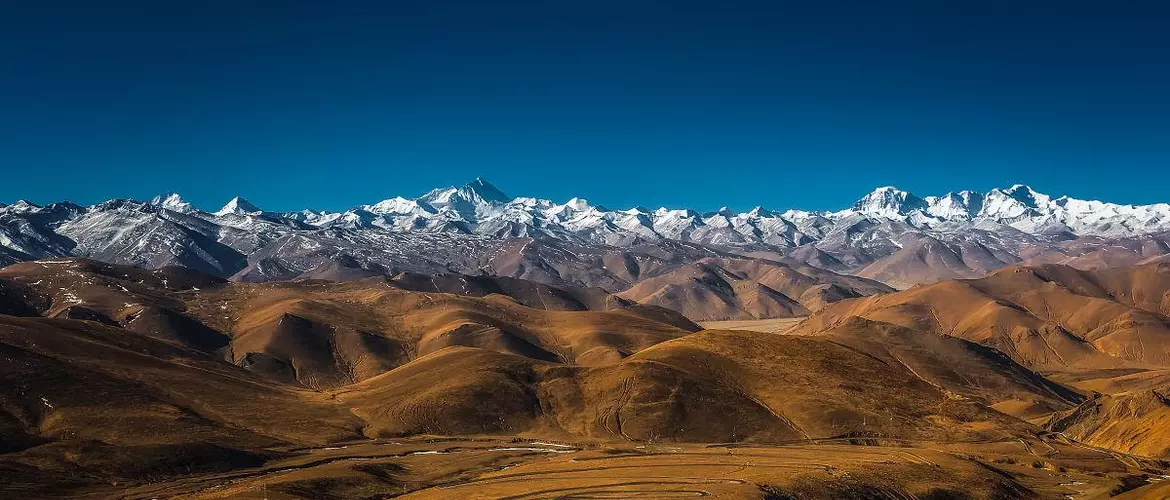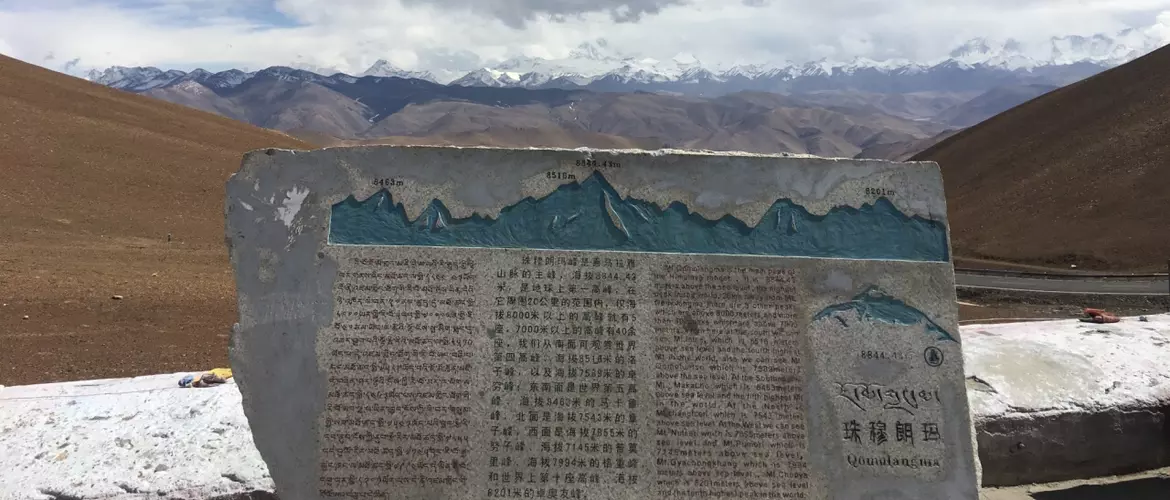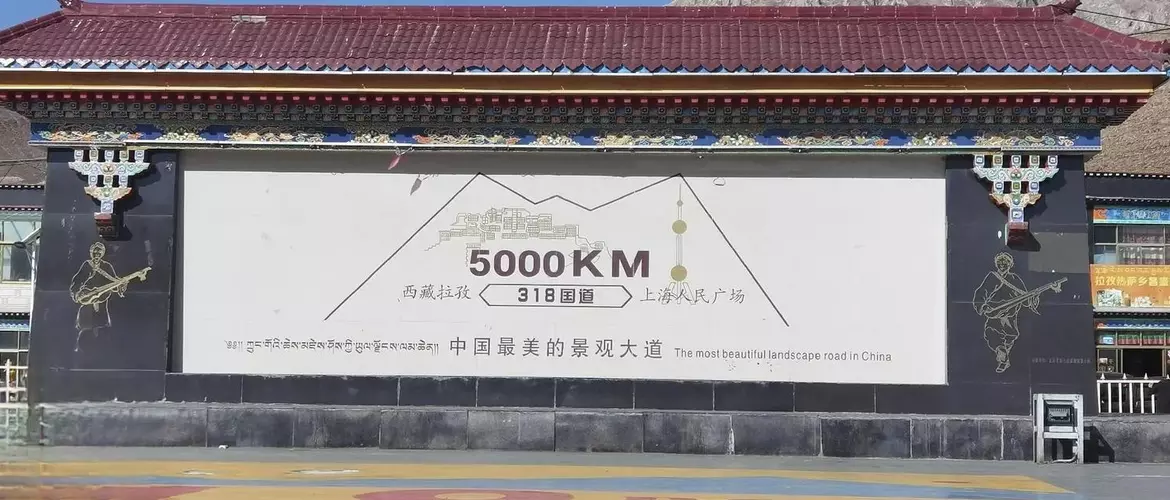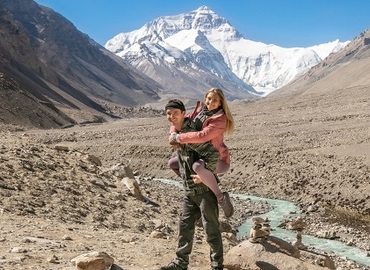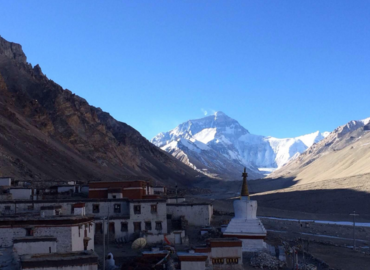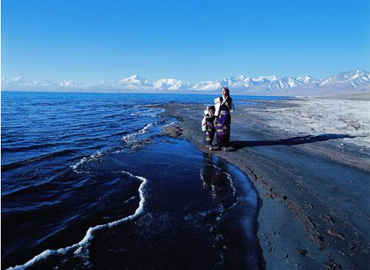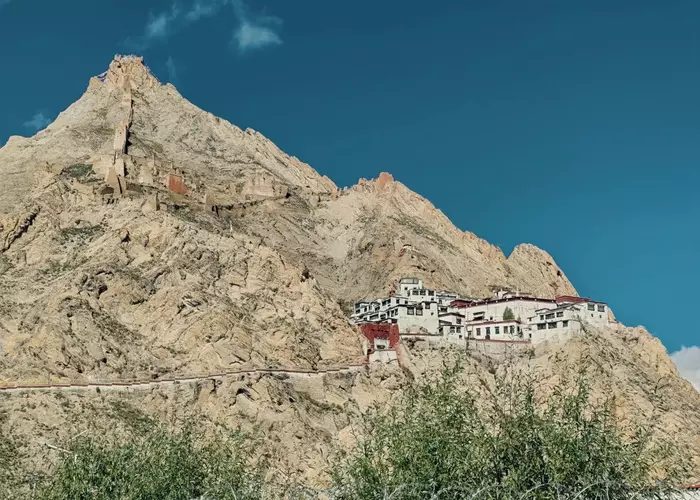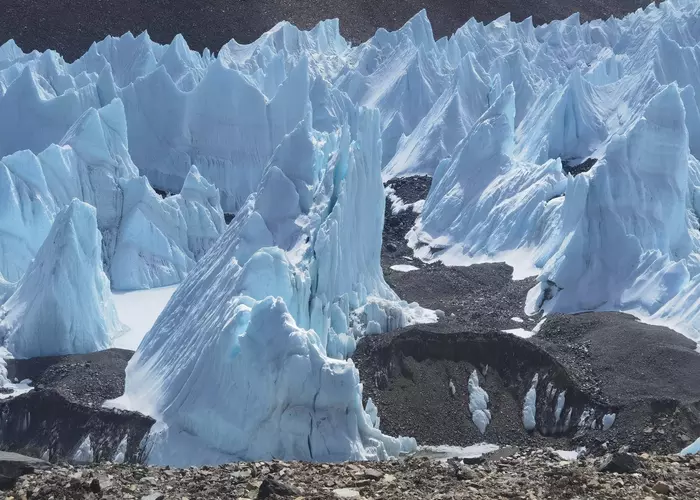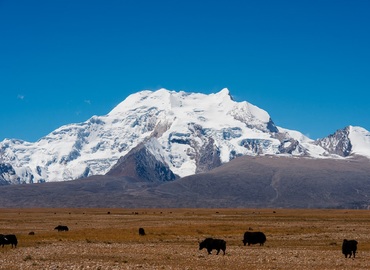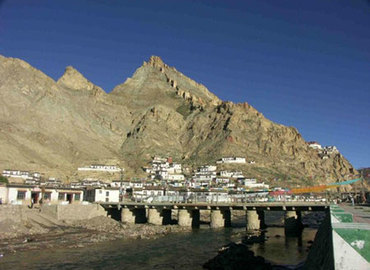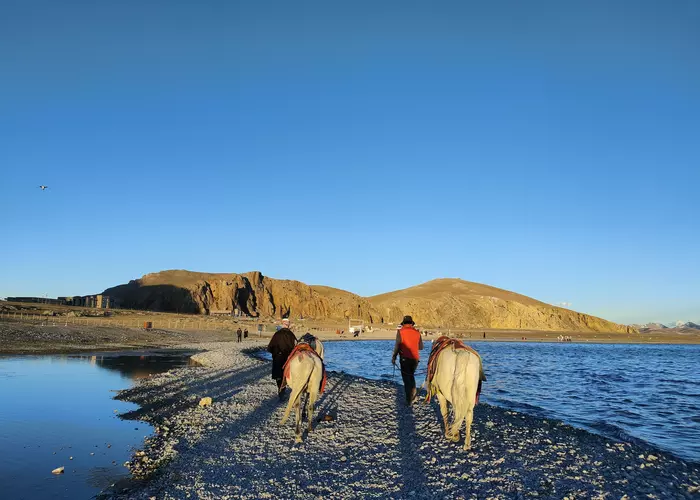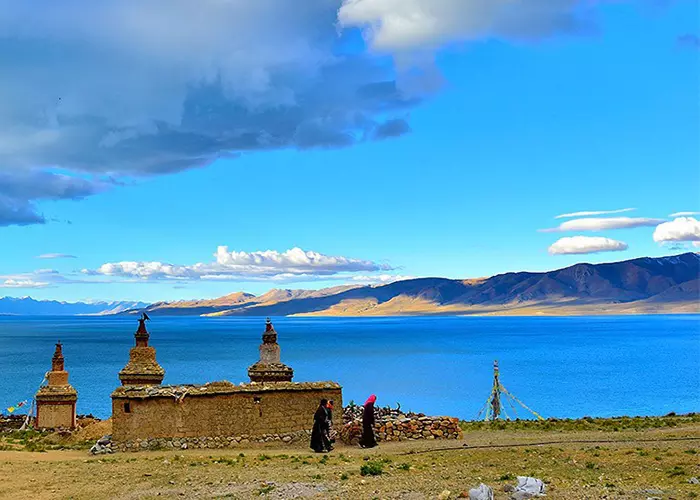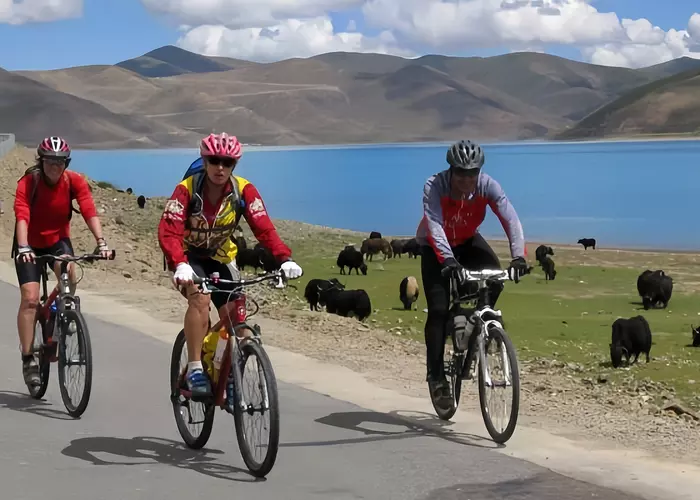Gawula Pass is a viewing platform that must be passed by after entering the Everest National Nature Reserve from Shigatse via Tingri County, heading to the Everest Base Camp. Its altitude is 5,210 meters. From the Gawula Pass, you can see the five 8000-meter snow-capped mountains at the same time (in order from left to right: Mt.Makalu /8,485m, Mt.Lhotse /8,516m, Mt. Everest /8,844m, Mt. Cho Oyu /8,201m, Mt. Shishapangma /8,027m). It's the world's only viewpoint that can simultaneously view five 8,000-meter snow peaks, so it is also popularly known as "the world's most beautiful viewing platform". Gawula Pass is about 300 kilometers from Shigatse, about 30 kilometers from Tashizong Town of Tingri County, and about 80 kilometers from Everest Base Camp.
Viewing Top Snowy Peaks
Compared to looking up at the snowy mountains at the foot of the mountain, standing on the mountain and overlooking the snow-capped mountains is completely different, as the perspective is wider and it can better reflect the majesty of the snow-capped mountains stretching hundreds of miles. Usually, tourists only stay at the pass, where you can see five 8000-meter-high peaks. However, if you walk a short distance to reach the summit above the mountain pass, at the top of which you can see the 6th over 8,000m snow mountain - Kangchenjunga /8,586m in the east.
There is a stone tablet written in Tibetan, Chinese, and English by the People's Government of Tingri County on the viewpoint platform. The inscription is as follows:
Mount Everest is the main peak of the Himalayas, with an altitude of 8,848.86 meters, making it the highest peak on earth. Within a 20-kilometer radius around it, there are five peaks above 8,000 meters above sea level and more than 40 peaks above 7,000 meters above sea level. From its south, you can see the world's 4th highest peak, Lhotse Peak, with an altitude of 8,516 meters, and Zhuoqiong Peak with an altitude of 7,589 meters. To the southeast is the world's 5th-highest peak, Makalu Peak, with an altitude of 8,463 meters. To the north is Changtse with an altitude of 7,543 meters, to the west, is Nuptse Peak with an altitude of 7,855 meters, Pumori Peak with an altitude of 7,145 meters, GyachungKang Peak with an altitude of 7,994 meters and Cho Oyu, the world's 10th highest peak with an altitude of 8,201 meters, as well as Shishapangma, the world's 14th highest peak with an altitude of 8,012 meters.
On the periphery of Mount Everest, there are some world-class peaks facing each other in the distance. To the southeast, you can overlook the world's third-highest peak, Mount Kanchenjunga, 8,586 meters above sea level. This peak is located at the junction of Nepal and Sikkim, where numerous peaks come together, forming the third pole of the world.

In accordance with the order of inscription, there are six peaks above 8,000 meters that can be seen from the Gawula Pass Observation Deck, namely:
- Mt. Everest (Qomolangma), with an elevation of 8,848.86 meters, is known as "the world's first peak".
- Mt. Lhotse, with an elevation of 8,516 meters, is known as "the 4th highest peak in the world."
- Mt. Makalu, with an elevation of 8,463 meters, is known as "the 5th highest peak in the world".
- Mt. Cho Oyu, with an elevation of 8,201 meters, is known as "the 10th highest peak in the world".
- Mt. Shishapangma, with an elevation of 8,012 meters, is known as "the 14th highest peak in the world."
- Mt. Kanchenjunga, with an elevation of 8,586 meters, is known as "the 3rd highest peak in the world".
There are five peaks above 7,000 meters that can be seen from the Gawula Pass Observation Deck, namely:
- Mt. Zhuoqiong, with an elevation of 7,589 meters.
- Mt. Changtse, with an elevation of 7,543 meters.
- Mt. Nuptse, with an elevation of 7,855 meters.
- Mt. Pumori, with an elevation of 7,145 meters.
Therefore, it is well-documented that what can be seen at Gawula Pass is six peaks above 8,000 meters and five peaks above 7,000 meters, totaling 11 world-class peaks.
How to Get to Gawula Pass?
Due to the high altitude of Gawula Pass, it is recommended to arrive in Lhasa or other lower altitude areas in advance to adapt for one or two days, in order to reduce the risk of high altitude sickness. From Lhasa, along the G318 National Highway to the west, you can enjoy the beauty of the Yarlung Zangbo River Valley. After reaching Shigatse, your tour guide will help you apply for your Alien's Travel Permit on your behalf. Here you can also visit the famous Tashilhunpo Monastery, and rest for a night to reserve physical strength for the next day's trip.
You may get up early the next day and depart for Gawula Pass along the 318 National Highway. En route, you can drive onto a path to visit Sakya Monastery. If you continue going forward, you may meet herdsmen and yaks on the way. After entering the Everest scenic area, you will reach the famous 108 bends. 108 Bends are like the "hairpin bends" on the F1 track. The roads of the 108 bends are neatly arranged in a spiral pattern. Driving on this road requires climbing back and forth about 800 meters on a 180-degree curve, giving people a feeling of extreme challenge.
After driving through the curves, you can reach Gawula Pass. After enjoying the perfect view here, you can continue to Everest Base Camp to stay overnight or go backward to stay overnight at the foot of Mount Everest at Tashizong Town.
Best Time to Visit
In May and October every year, the weather is relatively stable and the visibility is high, enabling you to enjoy the majestic silhouette of the peaks more clearly.
During the day, going at sunrise (around 7 am to 8 am) or sunset (around 6 pm to 7 pm) is ideal for experiencing the stunning scenery.
Lhasa - Gyantse - EBC - Shigatse - Lake Namtso - Lhasa
Explore Highlights of Lhasa, gaze on the world’s highest peak - Everest and have a fabulous sightseeing trip to Namtso.
Lhasa – Gyantse – Shigatse - EBC - Kailash Trek - Lake Manasarovar – Zhongba - Gyriong
Admire the most spectacular natural scenery of Tibet including Mt.Everest, Mt.Kailash, etc. Finally arrive in Kathmandu.
Lhasa - Gyantse - Shigatse - Tingri - Everest Base Camp - Shigatse - Lhasa
An awe-inspiring experience and a must for biking enthusiasts. The stunning landscape is worth your effort.
Email response within 0.5~24 hours.


